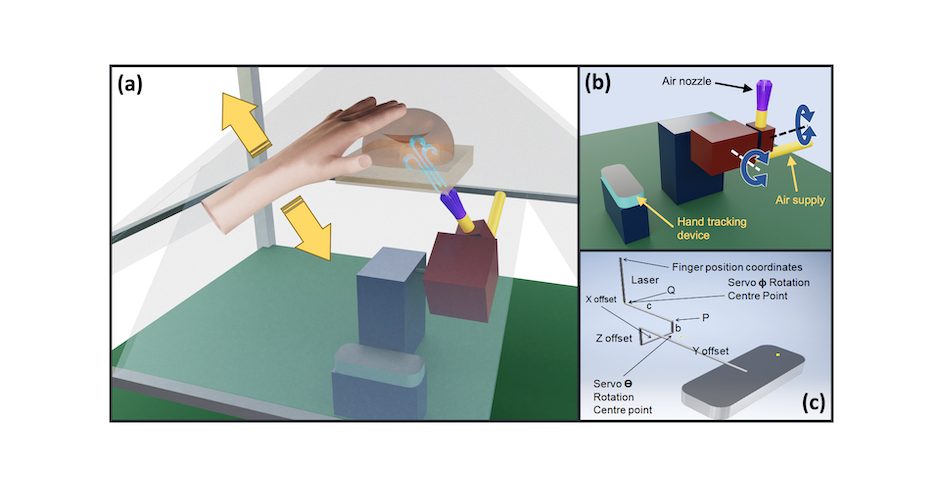At the University of Glasgow, researchers developed a hologram using “aerohaptics”
Holograms are systems already being employed in different fields: medical, education, art, security, and defense, but scientists are still working on ways to use lasers, current digital processors, and motion-sensing technologies to build a range of holograms that could revolutionize how humans interact.
At the University of Glasgow’s bendable electronics and sensing technologies research group has developed a system of holograms using an “aerohaptics” system that creates a feeling of touch with jets of air on people’s fingers, hands, and wrists.
To create this feeling they used affordable, commercially available hardware parts to pair computer-generated graphics with carefully directed and controlled jets of air.
It’s a step forward from the current generation of virtual reality, which typically involves a headset to display 3D images and smart gloves or portable controllers to provide haptic feedback, which feels like touch stimulation but the majority of wearable gadget-based techniques are limited to managing the displayed virtual item. The introduction of an artificial touch sensation can provide an extra dimension without requiring the use of gloves to feel objects and hence seems more natural.
This study employs graphics to create the illusion of a three-dimensional virtual image. It’s a modern example of Pepper’s Ghost, a 19th-century illusion technique that wowed Victorian theatergoers with appearances of ghosts onstage.
The system makes a two-dimensional image appear to float in space without the use of any additional equipment, while the haptic stimulation is provided entirely with air.
The mirrors are organized in a pyramid configuration with one open side. Users interact with computer-generated objects that look like floating in free space inside the pyramid by putting their hands through the open side. The images were developed and managed by a software application called Unity Game Engine, which is commonly used in video games to build 3D objects and worlds.
A sensor that records the movements of users’ hands and fingers is located directly below the pyramid, while a single air nozzle directs jets of air towards them to generate complex touch sensations. Electronic hardware programmed to manage nozzle movements controls the whole system. The air nozzle responds to human movements with optimal combinations of direction and force thanks to an algorithm.
A demonstration of the capabilities of the “aerohaptic” system is done with an interactive projection of a basketball, which can be convincingly touched, rolled, and bounced. The touch feedback from air jets from the system is also modulated based on the virtual surface of the basketball, allowing users to feel the rounded shape of the ball as it rolls from their fingertips when they bounce it and the slap in their palm when it returns.
Users can even push the virtual ball varying the amounts of force to feel the difference between a hard and soft bounce in their palm. So, even something as seemingly basic as bouncing a basketball needed to put in a lot of effort to describe the mechanics of the movement and figure out how to recreate that familiar sensation using air jets.
Soon researchers hope to be able to change the temperature of the airflow, allowing users to feel hot or cold surfaces, and they’re also looking into the possibility of adding scents to the airflow, which would enhance the illusion of virtual objects by allowing users to smell as well as touch them.
They also anticipated that as the system grows and evolves, it will find applications in a variety of fields including more engaging video gaming experiences without the need for cumbersome equipment, but it could also allow more convincing teleconferencing.
In addition, for the medical field, it could also make patients feel more involved and educated in treatment processes by allowing clinicians to cooperate on patient therapies. Doctors could examine, feel, and discuss the characteristics of tumor cells, as well as show patients surgical plans.
Source theprint.in
